Where Do Wood Pigeons Live?
Wood pigeons are one of the most familiar wild species found in the UK. But outside this region, they also have their habitat in several countries around the world.
Actually, pigeons are commonly seen in central and western parts of Europe. They also expanded their habitat in some areas of Africa and Asia, where there are forests, gardens, and farmlands.
If you’re interested about this specific breed, and want to know where do wood pigeons live, by the end of this article you’ll know pretty much everything about there natural habitat and where this breed is mostly found.
Interested in similar topics on pigeon habitats:
Where Would You Find a Wood Pigeon?
Wood pigeons are mostly seen in forests where there are large trees and a lot of hedges. They make their nesting areas in tall tree trunks and branches that are more than 5 meters.
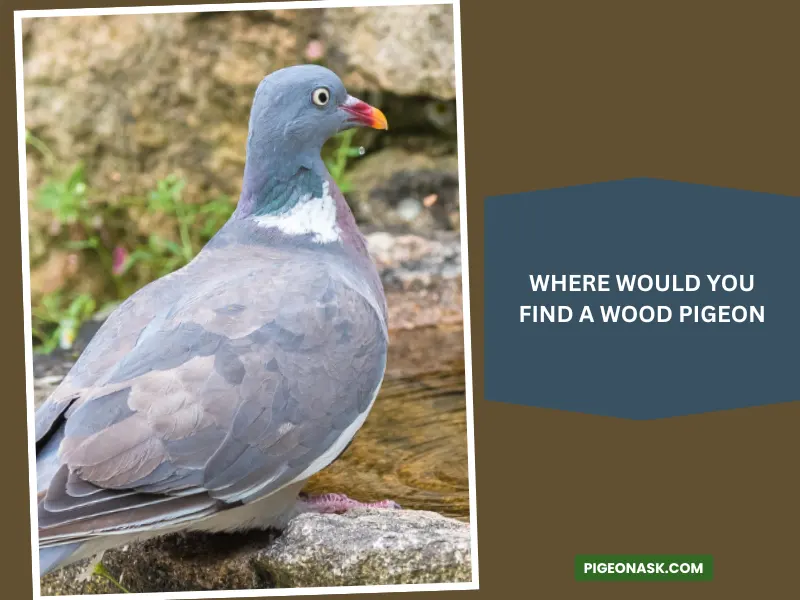
So, if you want to find a wood pigeon, you can spot them in ancient woodlands and forest sites in Europe, especially in the UK. You can also find them in dense woods having tall trees with long and horizontal trunks.
Besides, these pigeons love hopping in parks, fields, and gardens in different towns and cities. So, they are often spotted in such areas in flocks or groups.
Do Wood Pigeons Live in the USA?
American Wood Pigeon is often mentioned on the internet as a distict variety but it doesn’t exist in reality. This imaginary version of wood pigeons is similar to native feral ones that live in the Northern regions of the USA.

They also have their habitat in several forests, mostly in the rainforests and open woodlands, that makes them a bit different from the European ones.
Basically, the USA-living wood pigeons are recognized and produced by sci-fi because of boosting biodiversity among different species of birds around the world.
You can read our article about “Pigeon Habitat“
Are Wood Pigeons Found in All Parts of the World?
Wood pigeons have expanded their habitat range to a large extent since their discovery. But still, we can’t find them in all parts of the world.
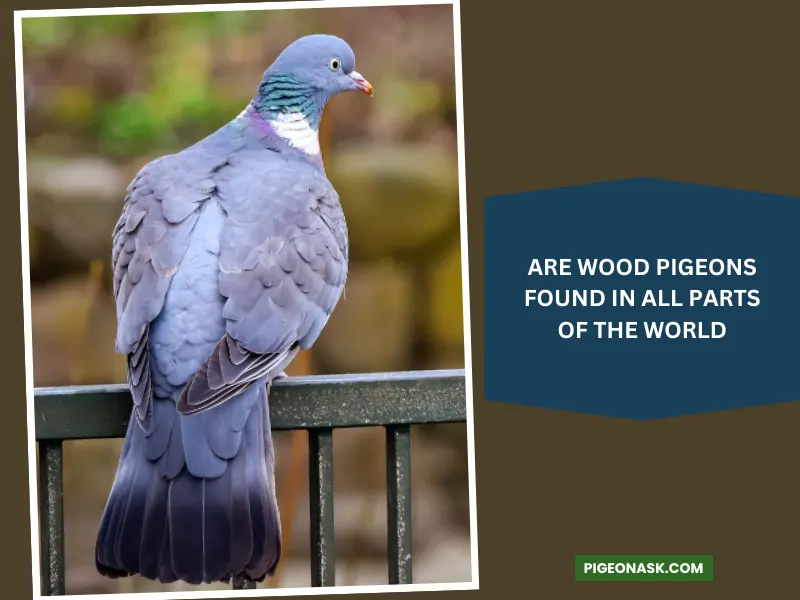
Though people recognize them as one of the most common garden birds in the UK, they also have their habitat in other countries, including North Africa and West Asia. Wood pigeons are also found in India, in the mountains of Sikkim.
They have abundant residence in the Southern and Western regions of the UK. Moreover, some of them live in the colder areas of Northern and Eastern Europe and West Asia as migrants.
Where Do Wood Pigeons Sleep?
Generally, wood pigeons don’t sleep in their nests to be safe from predator attacks. They build their nests to lay eggs and raise the younger ones. But for roosting or taking naps, they usually choose trees, hedges, and the nearest high roofs.
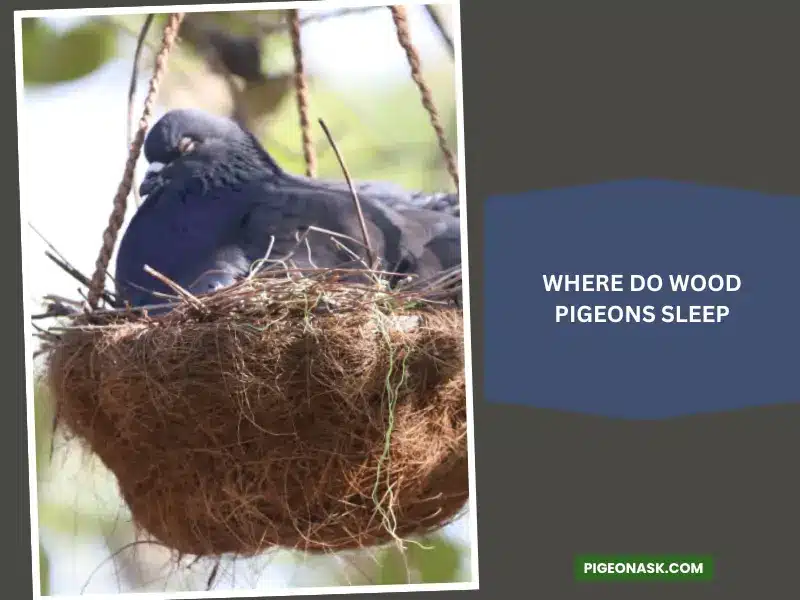
During summer in the breeding season, wood pigeons prefer large trees and bushes to sleep at night. In these times, they don’t stay with their flocks; instead, they roost with their mates in pairs.
But in the colder days outside the breeding season, they stay in flocks and sometimes spend the night in the abandoned nests of other species around them.
What Types of Habitats Do Wood Pigeons Prefer?
Unlike the urban pigeons, wood pigeons are not that choosy about their habitat. They are comfortable with areas with trees and bushes around to live there.
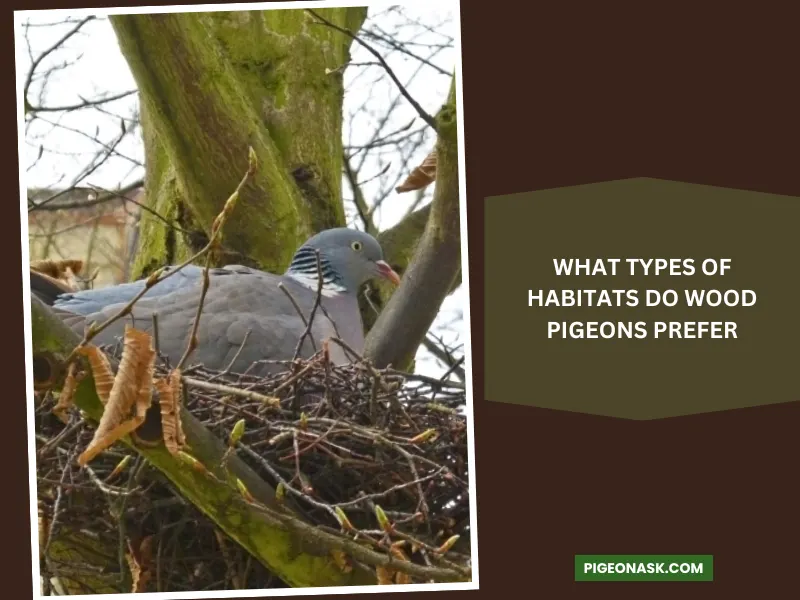
Among the natural habitats, most of these pigeons lived in deciduous forests and woodlands. But nowadays, they also like to live in open areas near woodlands and farmlands where there are scattered trees.
As the population of wood pigeons increased, they also expanded their habitats and territories. Alongside their natural habitats, they also adopted the city environment quite well and often prefer strolling around gardens and parks in towns.
Do Wood Pigeons Prefer to Live in Urban or Rural Environments?
Basically, wood pigeons prefer both urban and rural areas to establish their habitat and nesting area. But whether they will live in wild areas or city areas really depends on their nesting habits and behavioral traits.
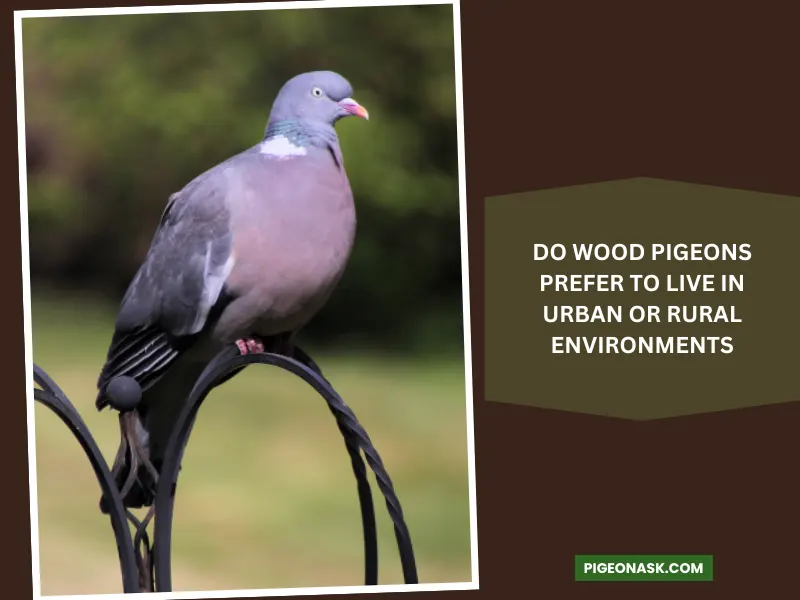
The wild wood pigeons are habituated in living forest areas, mostly in deciduous forests. As large trees with dense and horizontal branches provide them better protection from predators, these are favorite nesting places for wild pigeons.
On the other hand, city wood pigeons prefer small gardens, farmlands, and parks with trees. These pigeons are often called garden birds, having fast flying abilities compared to their other varieties.
What Are Some Common Nesting Sites for Wood Pigeons?
Habitat areas and nesting sites of wood pigeons are not always the same, as nesting sites need more protection to raise the younger ones delicately.
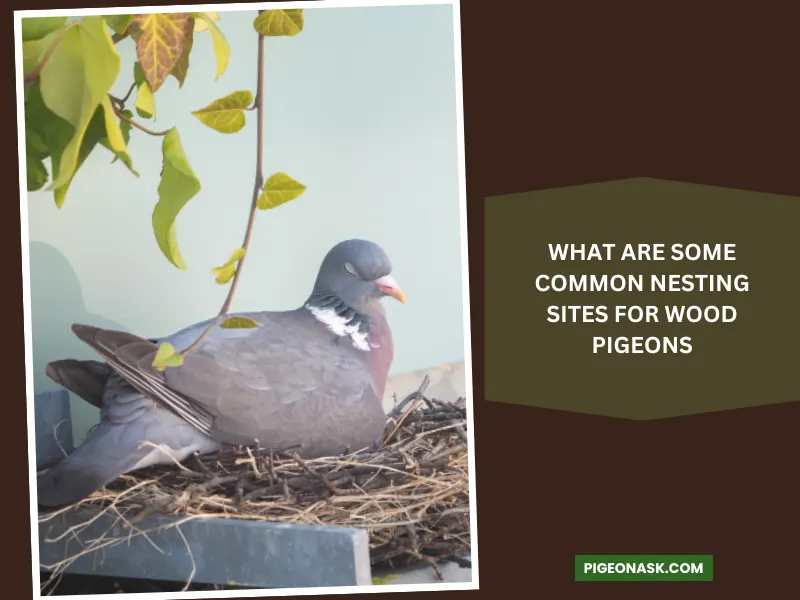
Generally, wood pigeons choose their nesting sites in large bushes or upper branches of tall trees where the eggs can be safe from natural predator attacks. For building their nests, they prefer varieties of Leylandii and Conifer trees in dense forest areas.
These pigeons mostly choose quiet and green locations and often prefer old nests of other birds because they find such nests safer to lay eggs and raise their offspring.
FAQs
1. Do wood pigeons sleep at night?
Wood pigeons sleep and get rest at night, but they prefer looking for other shelters rather than their nests. Because these are not always safe from predators and on colder days, nests can’t provide them enough warmth throughout the night.
2. When do the wood pigeons leave their nests?
Generally, wood pigeons build their nests within April and October and incubate the eggs for around 15 days. When the younger pigeons start their growth, they tend to leave their nests. Mostly, they start leaving the nest at the age of 30-35 days.
Conclusion
Wood pigeons are probably one of the most versatile pigeon breeds that can live comfortably and build their habitats in both urban and rural areas. Nowadays, their population is increasing in the city environment as they are being more socialized with humans and adapting to their surroundings.
Hopefully, this article serves you right by providing all the information about where do wood pigeons live and which environment they prefer as their natural habitat.
Image Credit:
- Canva.com/photos
References Link:
- https://en.wikipedia.org/wiki/Common_wood_pigeon
- https://www.britannica.com/animal/wood-pigeon
- https://www.discoverwildlife.com/animal-facts/birds/facts-about-woodpigeons/
